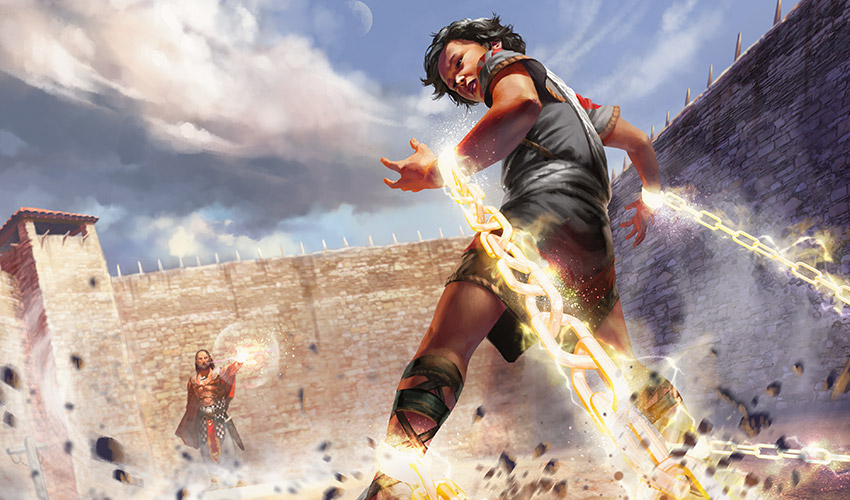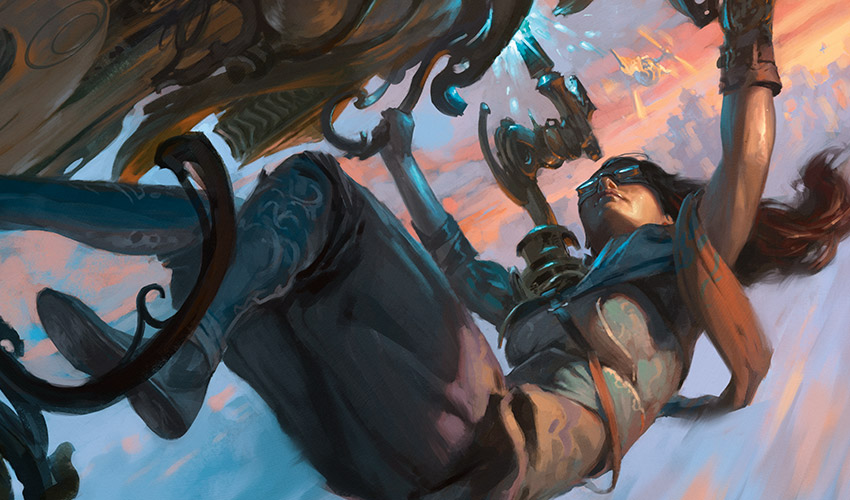61
It's always so tempting.
You're building a deck and there are just so many wonderful cards you want to play. You try and whittle down to only the best options, but the choices get harder and harder the deeper your decision tree leads you. You even decide to cut a land, perhaps against your better judgment, but it's still not enough.
And then it happens. An innocent little thought crosses your mind: "Maybe I'll just play more than 60 (or 40) cards."
I've done it before. You've probably done it before. Really, what can the harm be? It's probably not going to make a difference.
. . . Right?

Stop. Right. There.
What you're about to do is dangerous. It may not sound like such, but you are actively harming your chances of winning by not cutting down cards further.
If you look at every successful tournament deck ever, with very, very, very rare exceptions, they all play exactly 60 cards. The same is true for Limited decks and 40 cards.
Why is this? What makes the game that way? And can it ever be correct to break this rule?
Let's take a look today.
Always Tell Me the Odds
Get that 61st card out of your deck, Han Solo.
Why? Let's break it down.
You can play as many cards as you want in a Magic deck. So why don't people generally play more than the minimum? After all, playing more gives you access to additional different cards and can even prevent decking if the game comes down to that.
It's all about card quality.
Every deck is going to have some cards you want to draw more than others—your "best" cards. The Selfless Spirits, Grim Flayers, and Lightning Bolts of the world. These are generally stronger than the cards you're using to round out your deck.
In Limited, there's an even larger gap here. There's a tremendous difference between your rare bomb, like Noxious Gearhulk, and the simply fine Lawless Broker in your deck
By playing more than the minimum number of cards, you are reducing your chances, however slightly, of finding your strongest cards as often as possible.
The 61st card, definitionally, is going to be a worse fit than the cards that came before it when building your deck. Otherwise, you would have included it sooner!
Think of it this way. Take the 60-card version of your deck. Shuffle it. Then, put the 61st card on the top. That card is making it less likely you draw everything beneath it—which are the cards you would prefer to draw. (And no, being clever and saying that your 61st card is a land or a one-drop to circumvent this exact example doesn't count.)
Every draw step, you're just taking a tiny chance you'll draw something weaker than the strongest cards in your deck.
But What If . . .
In my sixteen years as a Magic player, I've seen a wide gamut of rationale made to include 61 (or 41) cards. In several cases, I've been the person making those claims—I remember one long road trip in particular where I was trying to convince people you should play 41 cards if your deck had enough Harrows.
Rather questionable, I know.
We've all been there. And, almost equivocally, I've seen nearly every argument I or someone else has made fall flat on its face when held under serious scrutiny.
"My 61st card draws a card, so it's the same thing as playing 60 cards except I get an extra spell."
Well, not really. First, what's even better than playing 61 cards with a card that functionally makes your deck 60 is playing 60 cards with a card that functionally makes your deck 59. If you want to cycle through your deck to find your best cards, the way to do that isn't to play extra cards.
Second, this falls down when considering things like mulligan decisions. If your Visions of Beyond is in your opening hand instead of whatever card is beneath it, you have a worse chance to appropriately gauge your draw.
Third, it still costs mana and time (or life, in the case of Street Wraith) to use. It's not just always going to be the card beneath it. If you wanted that to happen, you should just play fewer cards.
"I'm going to play a land as my 61st card so that I have the perfect ratio of lands to spells."
While your land-to-spell ratio may be more mathematically correct, you are still reducing the odds of drawing your best cards by doing this.
Additionally, there are more than enough ways to get to the number you're looking for. Consider having your 60th card be a land with an activated ability, for example, which gives you something that can act like a spell and a land.
"My 61st card is a tutor target for Trophy Mage, and it's better to have it in my deck so I can find it than not have it at all."
That's doubly making your deck worse: you're playing a card you apparently don't even want that often and reducing the chance you draw the cards you want more. If you want that card in there, cut something else.
The number of reasons you could argue playing more than the minimum number of cards is near endless; anything can be rationalized.
While there are a few examples of 61-plus card decks that have done well in tournaments, even many of those are quite arguable—and for every one of those, I can point to 20 other decks of a similar archetype that were successful running 60 cards. It is extremely unlikely, unless you're Huey Jensen, that you've cracked a compelling reason to break the 60-card rule.
If you'd like further reading on some of the common arguments (and why they're incorrect),
Patrick Chapin wrote a great article on this very subject that you can read here.
Rather than keep describing why not to do this, I'd prefer to focus on a few very, very specific times you can try correctly playing more than the minimum. There are three times I'd say this comes up most often (without involving the words "Battle of Wits"):
1. In Playtesting
Yes, that's right, the first one doesn't even involve playing a deck in a tournament. But it is a reasonable time to go over the minimum.
Playtesting should be used for gathering information. Playing with an extra card, if you're not sure what to cut or want to try something out, can be a fine way to gather information. For example, if you want to try out two different cards and collect data on both and that puts you to 61, this can be an efficient way of doing so.
Just make sure to cut down to 60 by the time you leave to go battle in your event.
2. In Limited, to Deck the Opponent
In Constructed, decking your opponent because you were playing 61-plus is not a realistic thing. Not only is it unlikely to happen in today's era, but it's likely someone has card draw or Rampant Growths to reduce deck size in a long game like that anyway. It's an interesting discussion point in theory, but not practical.
Where it can come up is in Limited. I want to stress this is not a common scenario, so you shouldn't just start jamming an extra card into every deck to ensure you don't run out of cards.
However, if you have an extremely slow deck or one that builds up massive defenses, going for the kill by running your opponent out of cards can be realistic.
It's important to keep all the variables here in mind though. Does your deck feature cards that draw you cards or ways to search for lands? Then this strategy doesn't really work unless you're willing to not cast those.
Is there incidental milling or targeted card drawing in the format? Because that can entirely mess this plan up.
It is seldom correct to do this, but much more often than in a Constructed format.
3. Because You Don't Know What to Do
Humans are plenty fallible. It's possible you've built up this deck and you aren't sure you're experienced or a good enough player to make the right choice. Rather than risk cutting something integral, you play one card over.
You can do this—as long as you honestly admit to yourself that you are making your deck worse.
You need to be sure that being guaranteed to hurt your chances is still better than cutting one of the cards you're thinking about. It's likely there's some redundant effect you can do without, but if you're really not sure, you can leave the extra card around.

Maximizing Minimums
Back when I was writing my old column, Reconstructed, where readers sent in decklists for me to critique every week, I'd constantly be sent decklists over 60 cards. It's a more common epidemic than many might think—and hopefully this steers you away from making that mistake.
For you devoted 61-plus players: yes, there are examples of success you can point to. But for every 61-card Lonely Sandbar Madness deck or mid-60s Elixir of Immortality deck, there's a huge group of similar decks that did well sitting on 60. The minimum is almost always where it's at.
Unless you're playing Battle of Wits. In which case: You rule! Keep fighting the fun fight.
Have any thoughts or questions? Feel free to send me a tweet, ask me a question on my Tumblr, or send me an email in English at BeyondBasicsMagic@gmail.com.
I'll talk with you again next week. Have fun!

